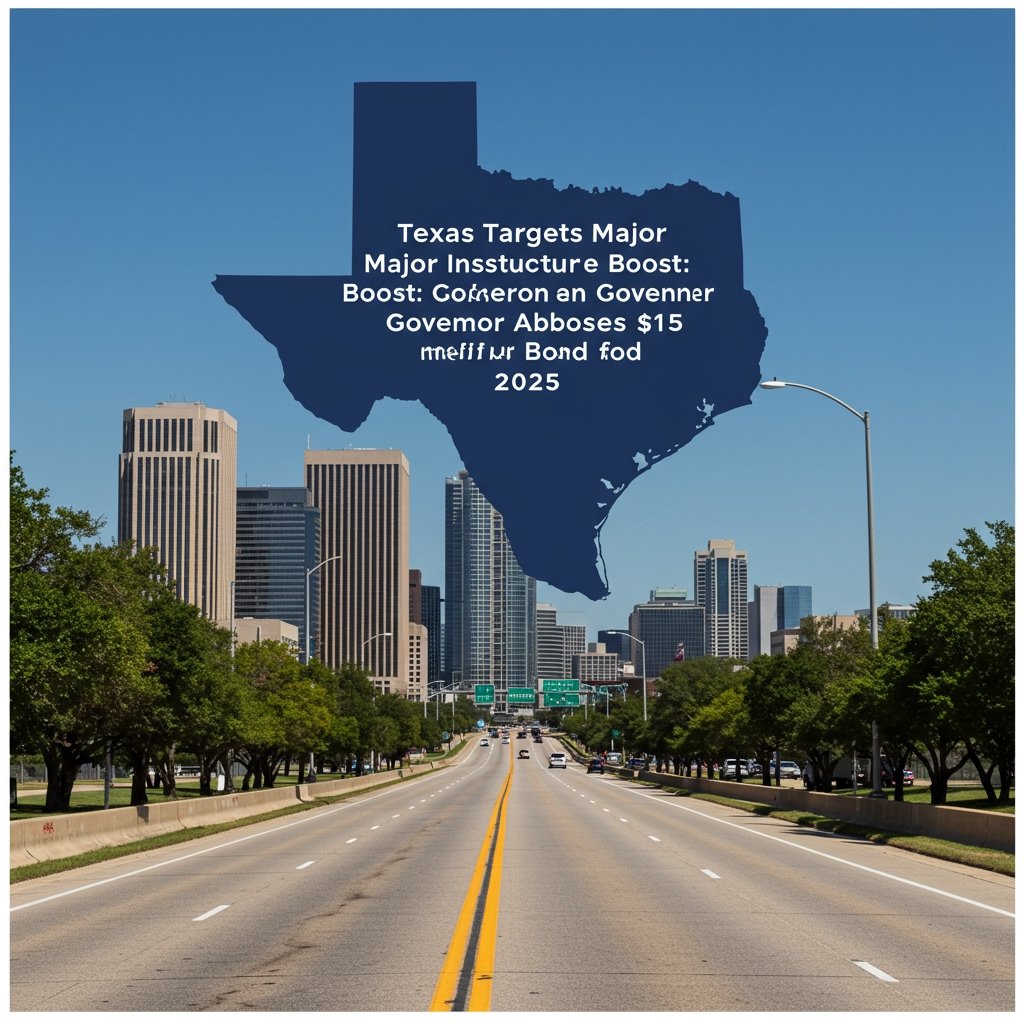Governor Abbott Unveils Ambitious Infrastructure Plan Ahead of 2025 Session
AUSTIN, TX – Governor Greg Abbott today announced a significant proposal aimed at tackling critical infrastructure needs across Texas: a substantial $15 billion statewide bond initiative. Dubbed the Texas Infrastructure Fund Bond Act of 2025, this ambitious plan is intended to provide dedicated funding to accelerate key transportation and water development projects throughout the state. Introduced as Senate Bill 14, the measure is poised to be a major focus of the upcoming 89th Legislative Session, scheduled to convene in early 2025.
The proposal, if enacted by the legislature and subsequently approved by Texas voters, would authorize the state to issue bonds specifically earmarked for a range of vital infrastructure improvements. These projects encompass both the movement of people and goods, as well as the fundamental need for reliable water resources in a rapidly growing state.
Scope of the Proposed $15 Billion Investment
The $15 billion bond package outlines funding for a diverse portfolio of infrastructure projects deemed essential for Texas’s future prosperity and resilience. Among the specific examples highlighted in the proposal are significant investments in the state’s transportation network. This includes major highway expansions, particularly focusing on congested corridors near major metropolitan centers like Austin and San Antonio. These expansions are critical for improving traffic flow, reducing commute times, and supporting economic activity that relies on efficient freight and passenger movement.
Beyond new construction and expansion, the bond initiative also targets the maintenance and repair of existing infrastructure. Crucial bridge repairs across the state are explicitly mentioned, addressing the need to ensure the safety and longevity of vital links within the transportation system. The emphasis on both expansion and repair underscores a comprehensive approach to managing Texas’s vast road and bridge network.
In addition to transportation, a substantial portion of the proposed funding is directed towards water infrastructure. The bond act aims to finance new water supply infrastructure, with a specific focus on expanding access and reliability across rural Texas. This component addresses the challenges posed by drought, population growth, and aging systems, seeking to secure water resources for communities outside the major urban areas. Investments in water treatment, storage, and distribution are anticipated under this umbrella, aiming to enhance the state’s overall water security.
Addressing Resilience and Future Challenges
A notable aspect of the proposed Texas Infrastructure Fund Bond Act of 2025 is its inclusion of funding dedicated to resilience projects. Experts analyzing the package have noted that specific allocations are planned for coastal areas that have been particularly affected by recent storms. This targeted funding is intended to support projects that enhance the ability of coastal communities and infrastructure to withstand and recover from extreme weather events, a growing concern given the increasing frequency and intensity of such storms.
Investing in resilience infrastructure, such as improved drainage systems, protective barriers, and elevated roadways, is seen as a proactive measure to mitigate the economic and social impacts of natural disasters. This component of the bond package acknowledges the unique vulnerabilities of Texas’s extensive coastline.
Legislative Process and Potential Debate Points
The introduction of the $15 billion bond proposal as Senate Bill 14 marks the beginning of a potentially robust legislative debate during the 89th Legislative Session. While the stated goals of improving infrastructure and enhancing resilience are likely to find broad support, the scale of the funding and the mechanism – state debt through bond issuance – are anticipated to generate substantial discussion.
Lawmakers will scrutinize the potential impact on state debt levels, evaluating the long-term financial implications of borrowing such a significant sum. The structure of the bonds, repayment terms, and potential interest costs will be key areas of focus. Fiscal conservatives, in particular, may raise concerns about the expansion of state indebtedness.
Furthermore, the prioritization of specific regional projects within the bond package is expected to be a point of contention. Legislators representing different parts of the state will advocate for funding for projects in their districts, leading to potential negotiations and amendments to the proposed project list. Balancing statewide needs with regional priorities is a perennial challenge in large-scale infrastructure funding debates.
The coming weeks are anticipated to be crucial as legislators, state agencies, and interest groups begin to analyze the details of Senate Bill 14. Public hearings, committee markups, and floor debates in both the Texas Senate and House of Representatives will shape the final form of the legislation. For the bond act to move forward, it must pass both chambers of the legislature and then be approved by Texas voters in a statewide referendum, typically held in November of odd-numbered years.
Conclusion: A Pivotal Moment for Texas Infrastructure
Governor Abbott’s proposal represents a significant commitment to addressing Texas’s mounting infrastructure needs. By seeking a $15 billion investment through voter-approved bonds, the administration is signaling an intent to pursue a large-scale, dedicated funding stream beyond traditional appropriations. While the Texas Infrastructure Fund Bond Act of 2025 offers the potential for accelerating critical projects from highways near Austin and San Antonio to water systems in rural Texas and resilience measures in coastal areas, its path through the 89th Legislative Session will likely involve considerable debate over state finance and project priorities. The outcome of this legislative effort will have lasting implications for the state’s ability to keep pace with growth and enhance its resilience in the face of future challenges.






